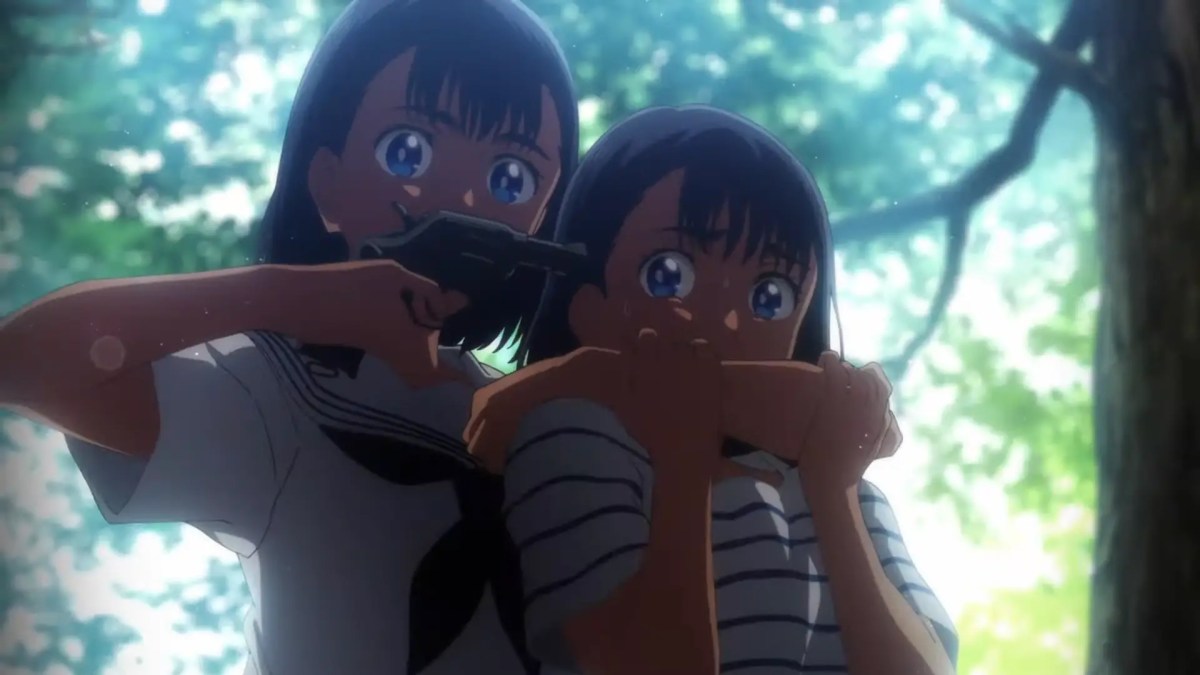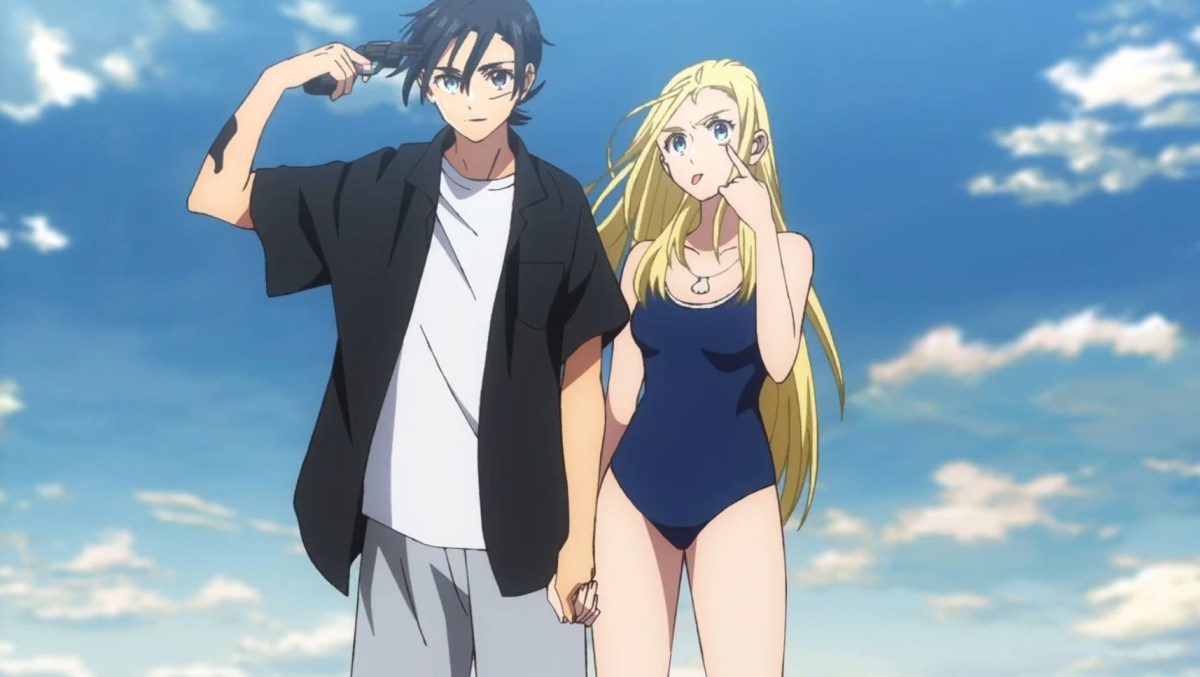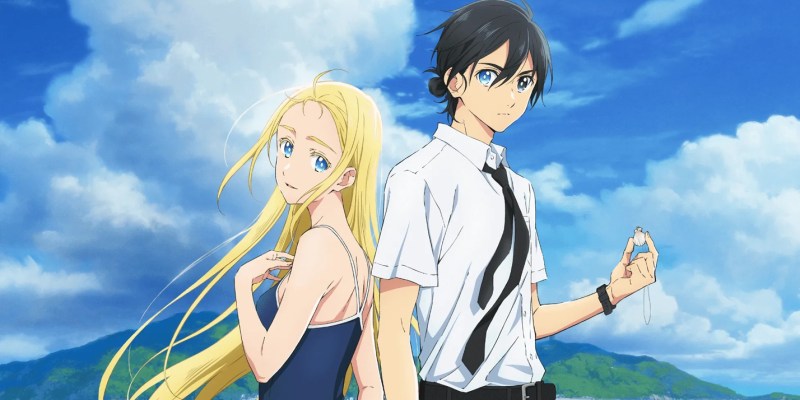It seems like in the world of video games, time loops are all the rage. From Deathloop to Twelve Minutes to Returnal, most game developers have tried hard to make time loops the next big trope to mixed results. Gamers are starting to get tired of them, but that isn’t to say that time loops can’t be done in interesting ways. Anime like Steins;Gate and the Re:Zero series have found ways to use time loops in interesting ways that viewers tended to enjoy. It’s merely another tool in the toolbox, and it’s used in a fairly unique way by a relatively low-key anime by the name of Summer Time Rendering.
Summer Time Rendering is a show that, by the end of the first episode, establishes that this is going to be an unconventional story that utilizes time loops. Our protagonist, Shinpei Ajiro, travels back to the small island that he grew up on to attend the funeral of his childhood friend, Ushio Kofune, who died trying to save a little girl from drowning. However, strangulation marks are seen around her neck, and Shinpei, as well as some of his friends, begin to wonder if something else is going on. As Shinpei begins to investigate what happened with Ushio’s sister Mio, the pair encounter an exact duplicate of Mio, who proceeds to murder both of them in cold blood. The episode then cuts right back to the very beginning with Shinpei taking a boat back to the island, and Shinpei is fully aware that he was murdered by a duplicate of his best friend’s sister but unaware of how and why he went back in time.
Right from the gate, Summer Time Rendering presents the viewer with a lot of different questions. How did Ushio really die? Why was there a clone of Mio, and why did it kill both Shinpei and Mio? How is Shinpei able to travel back to the moment he came back to the island? All of these questions lay the groundwork for a fairly compelling mystery, one that takes numerous twists and turns as the story progresses over the 25 episodes. If you want answers to these questions, you’ll have to watch them for yourself ’cause you won’t find them here. After all, what good is a mystery if you already know the solution?

What makes Summer Time Rendering’s time loop relatively interesting is that the time loop is more of a hook than the core of the story itself. The time loop is prominent but primarily serves as a way to allow Shinpei to attempt new approaches and gather information, but not necessarily for other loops. For example, fairly early on, Shinpei dies in a loop when the clone of Mio discovers him trying to spy on her, but in the next loop he places a camera there to record her and show it as evidence that there’s something weird happening on the island. In yet another loop, when Shinpei attempts to once again track the Mio clone outside of her house, she never shows up, only to instead outright attack the house rather than survey it. Shinpei wonders why that is until he realizes that not only does he have the ability to loop, but the villains also do as well.
It’s this constantly changing dynamic that lends the series its thriller elements. In a game like Twelve Minutes, the use of the time loop was to try different approaches of the same period of time to find some resolution to the conflict, using new information from loop to loop to help reach that goal. Here, the info is useful but is quickly seen as being irrelevant when our heroes realize that villains have that exact same advantage.
Shinpei will die and loop back to an increasingly later point in the timeline, quickly deducing how he died and what went wrong and making quick decisions to hopefully avert his tragic end. The villains become more emboldened in their goals and aggressively try to capture Shinpei rather than kill him. After all, if he dies, he’ll just go back in time and use the new information to stop them. Summer Time Rendering comes across like a game of cat and mouse, with both sides trying to outsmart one another, then using the time loop to subvert each other’s advantages.

The series is also a smorgasbord of ideas all being piled onto one another. You get your mystery bits with the introduction and new twists revealed in every loop. There are the thriller bits when the clones become more aggressive and the time loop is weaponized against our protagonists. There’s the sci-fi element of trying to explain where the clones came from and fantasy bits from how the time loop works. There’s even some cosmic horror to explain the origins and the relationship between our main antagonists, a tiny girl named Haine and a gigantic four-armed shadow monster named Shide. Whatever your preference is, Summer Time Rendering has something to offer.
If you’re someone who’s a fan of action, then this series may also satisfy your urges, but not as much as you may think. There are plenty of brief moments of violence that drive home just how badly Shinpei and the rest of the cast screwed up the current loop, but those moments are rare and infrequent. There are a lot more fight scenes as the series reaches its second half in an attempt to ratchet up the tension, but the first half is very plot- and dialogue-driven. Those brutal action scenes serve as punctuation for particular character arcs, although the characters themselves are nothing to write home about. This isn’t a series that is centered on its cast, but rather on the situation they’re put into and how the mysteries of the island began in the first place.
But I think what makes Summer Time Rendering such an oddity in the anime world today is that it’s a complete story. Most series nowadays will deliver one course of episodes, usually anywhere between 11 and 13, then take a break for a few months or even a year, then come back and keep going. Sometimes the series that are being adapted aren’t even finished yet, such as is the case with many Shonen Jump titles. But Summer Time Rendering is complete. It’s a full adaptation of a 13-volume manga with very few cuts that aired an episode every week for six months. There was no break in-between episodes, and when the credits began to roll, every major character had a logical conclusion with no loose threads.

It’s just a shame that we couldn’t have watched it as it was airing in Japan and follow along with it week after week. The series was announced to have been licensed by Disney+, which held off on releasing the series in the West on Hulu until January 11, when it unceremoniously just released it and tweeted about it with no fanfare. We had to wait nearly an entire year to watch the premiere, and that alone killed a lot of attention that the series could have generated. If people were watching Summer Time Rendering in the West week after week, it very well could have generated a lot of positive discussions and have people speculate on what could happen next. The show technically works if you binge it all at once, but it’s better if episode consumption is paced out and the cliffhanger at the end of each episode is given room to breathe.
When I had originally started to write this piece, I was going to call Summer Time Rendering the best anime of 2022 that you couldn’t see. And yes, it is one of the best anime that came out last year, and it’s already in the running for one of the best anime of 2023. The story is well-constructed and paced and serves as a great adaptation of a solid manga. It’s an example of how you can use a trope like a time loop in new and inventive ways, creating a story that is familiar but constantly subverts your expectations. It makes me interested in seeing what other creators can do with tropes that people are tired of. If a time loop can be used to make a solid mystery / thriller, what else can be made?
